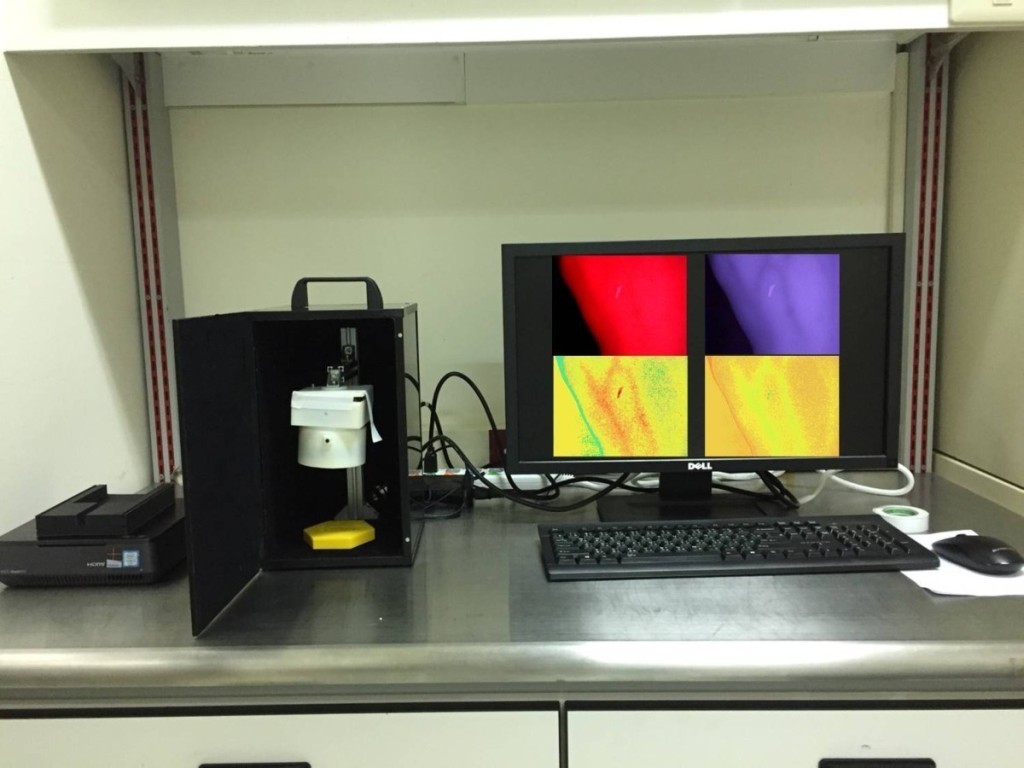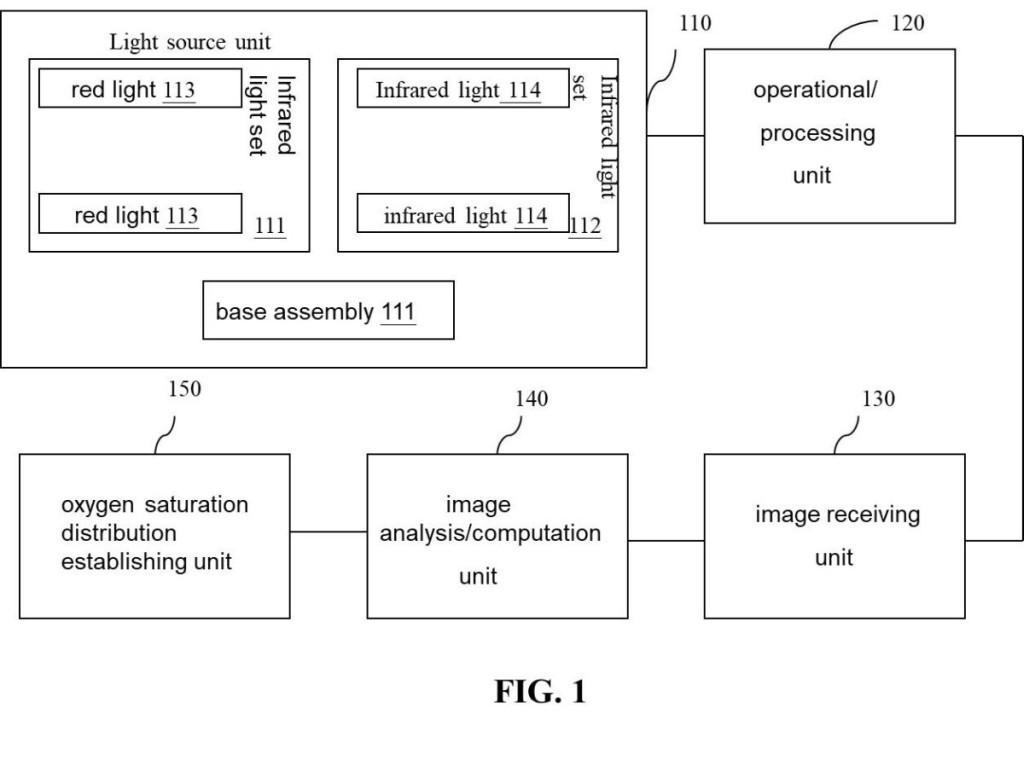| Technical Name | Application of No-contact Skin Oxygen Saturation Imaging System | ||
|---|---|---|---|
| Project Operator | National Applied Research Laboratories | ||
| Summary | In the SOSI system, two lights at wavelengths of 660 and 890 nm were used to irradiate the skin tissue, and a mono camera was used to acquire the skin image. Based on the intensity information of reflected skin images, the index of blood oxygen saturation and blood glucose could be calculated. At the same time, the change of blood oxygen saturation in a period of time could be transferred to the spatial frequency of oxygen saturation by the fast Fourier transform (FFT) technique to estimate the heartbeat, blood flow velocity and other physiological characteristics. |
||
| Scientific Breakthrough | Oxygen is necessary for the nutrition of living cells in a human body, and a low oxygen supply can damage the human tissues and cause hypoxia and loss of consciousness. Moreover, oxygen deficiency in the brain can directly damage the nervous system, resulting in memory loss and unconsciousness if the deficiency persists. Therefore, the determination of oxygen saturation (SpO2) in the human body in a short time is crucial for clinical diagnosis and treatment. Therefore, this study developed a skin oxygen saturation imaging (SOSI) system to evaluate the SpO2 in the human body by using the reflected skin image. In the SOSI system, two lights at wavelengths of 660 and 890 nm were used to irradiate the skin tissue, and a monocamera with a resolution of 0.8 million pixels was used to acquire the skin image. The reflected images of the skin tissue at the red and NIR spectra were used to compute the absorption of Hb and HbO2 in blood and calculate the SpO2 levels in this study. By using the proposed SOSI system, the disadvantages of pulse oximetry can be overcome evidently, and the measuring accuracy of SpO2 levels can be enhanced considerably. The SOSI system is a noncontact measuring method for shallow tissues, and the obtained SpO2 distribution map of the entire measuring region can facilitate the determination of the status of patients’ cardiovascular systems. Compared to the pulse oximetry measurement, the proposed SOSI system can be used to measure the SpO2 levels in a shallow tissue of the human body, and has advantages of rapid measurement (less than 10 s) and high accuracy (the measurement error was maintained at 1%). In addition, the SpO2 levels in a large area of 80 × 80 mm2 can be provided and the SpO2 distribution map can be directly built to assist physicians conducting clinical diagnoses. Moreover, relative equations were developed and can be used to evaluate the heart rate (HR) and blood flow velocity (BFV) from the frequency of the SpO2 fluctuation. The proposed SOSI system can be used to obtain critical information and all results of this study provide advance and crucial information for physicians in preventing cardiovascular diseases. |
||
| Industrial Applicability | 本研究基於皮膚光學 (skin optics) 中的皮膚組成成分與血紅素光吸收率理論,探討光線於進入如皮膚等淺層組織之折反射效應、散射效應,建立血氧濃度 (oxygen saturation, SpO2) 影像數學模型,並將特定時間內血氧濃度的變化經快速傅立葉轉換取得血氧濃度波動頻率,未來將藉著本研究,針對血氧濃度波動頻率,進一步探討在不同年齡層、生理健康狀態下造成的血氧濃度、血氧濃度波動頻率與心跳及血流速度之間之相互關係。 |
||
other people also saw







